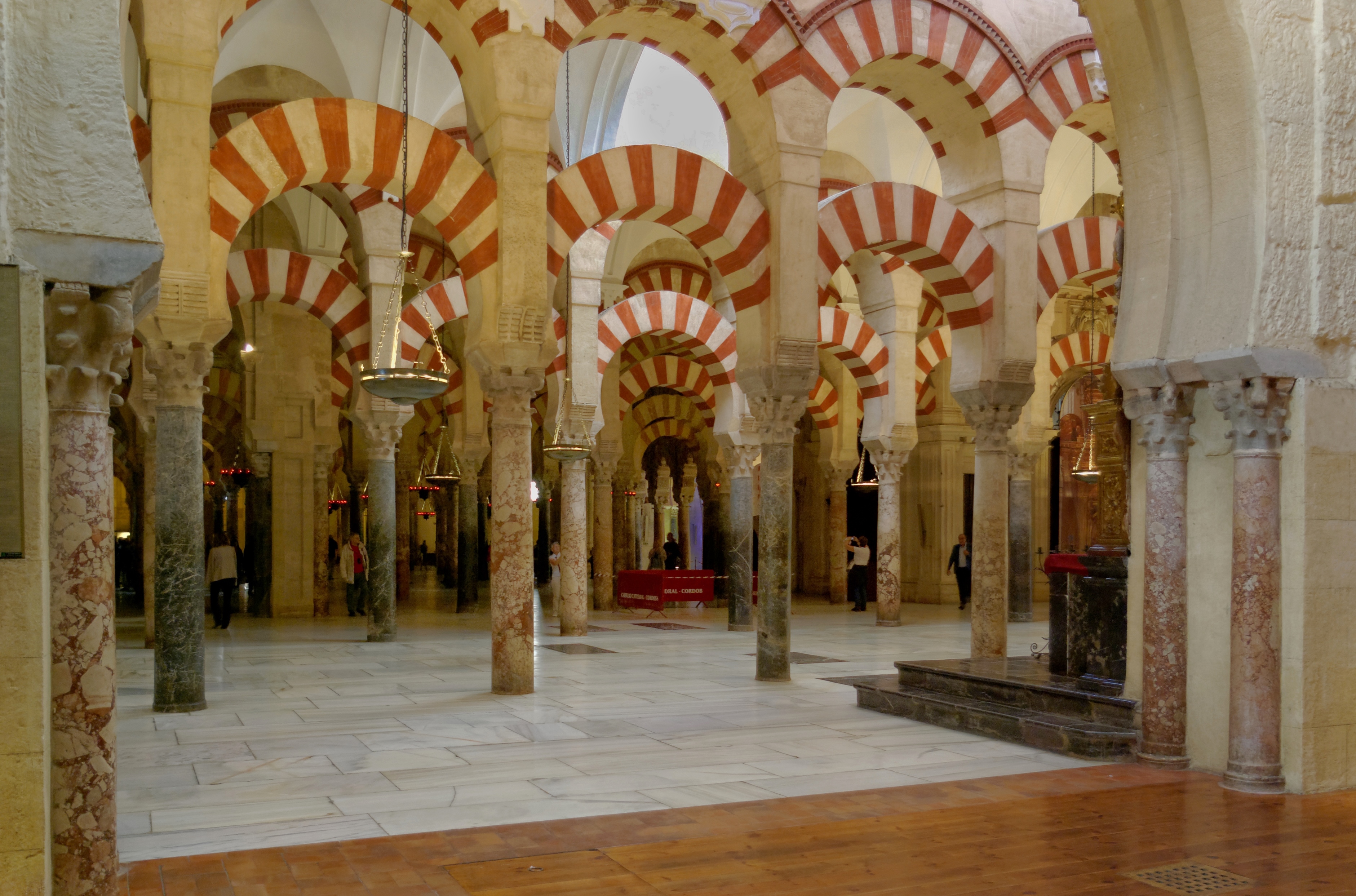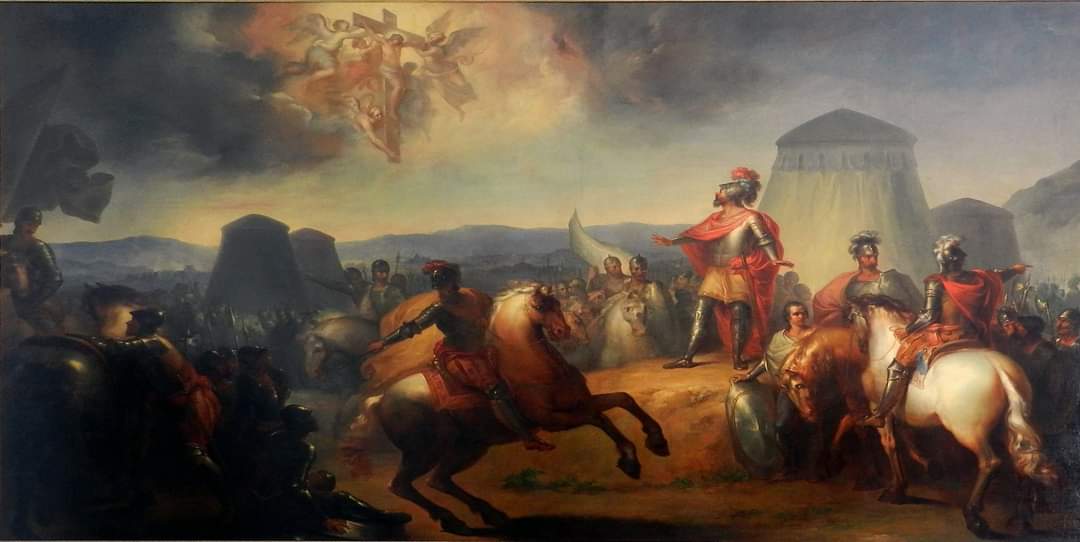|
Lower March
The Lower March (, ''al-Thaghr al-Adnā''; ) was a march of al-Andalus. It included territory that is now in Portugal. As a borderland territory, it was home to the so-called '' muwalladun'' or indigenous converts and their descendants, some of whom eventually established dynastic lordships. This was the case of Ibn Marwan al-Jilliqi who ruled the Cora of Mérida during the early part of the ninth century, a region with its capital in modern Mérida, including the area of modern Badajoz. Several rebellions occurred in the territory, most notably caused by Umar ibn Hafsun and two of his sons refusing to recognize the Emir of Cordoba's sovereignty; even after Ibn Hafsun's death, small pockets of independent resistance persisted. It was not until a decade after Ibn Hafsun’s demise that the Emir of Cordoba was able to completely quell the rebellion in the Lower March. In the reign of ʿAbd al-Raḥmān III (912–961), the Lower March was combined with the Central March to form ... [...More Info...] [...Related Items...] OR: [Wikipedia] [Google] [Baidu] |
ʿAbd Al-Raḥmān III
ʿAbd al-Raḥmān ibn Muḥammad ibn ʿAbd Allāh ibn Muḥammad ibn ʿAbd al-Raḥmān ibn al-Ḥakam al-Rabdī ibn Hishām ibn ʿAbd al-Raḥmān al-Dākhil (; 890–961), or simply ʿAbd al-Raḥmān III, was the Umayyad Emir of Córdoba from 912 to 929, at which point he founded the Caliphate of Córdoba, serving as its first caliph until his death. Abd al-Rahman won the ''laqab'' (sobriquet) () in his early 20s when he supported the Maghrawa Berbers in North Africa against Fatimid expansion and later claimed the title of Caliph for himself. His half-century reign was known for its religious tolerance. Life Early years Lineage and appearance Abd al-Rahman was born in Córdoba, on 18 December 890. His year of birth is also given as 889 and 891. He was the grandson of Abdullah ibn Muhammad al-Umawi, seventh independent Umayyad emir of al-Andalus. His parents were Abdullah's son Muhammad and Muzna (or Muzayna), a Christian concubine. His paternal grandmother was also a C ... [...More Info...] [...Related Items...] OR: [Wikipedia] [Google] [Baidu] |
Medieval History Of Portugal
In the history of Europe, the Middle Ages or medieval period lasted approximately from the 5th to the late 15th centuries, similarly to the post-classical period of global history. It began with the fall of the Western Roman Empire and transitioned into the Renaissance and the Age of Discovery. The Middle Ages is the middle period of the three traditional divisions of Western history: classical antiquity, the medieval period, and the modern period. The medieval period is itself subdivided into the Early, High, and Late Middle Ages. Population decline, counterurbanisation, the collapse of centralised authority, invasions, and mass migrations of tribes, which had begun in late antiquity, continued into the Early Middle Ages. The large-scale movements of the Migration Period, including various Germanic peoples, formed new kingdoms in what remained of the Western Roman Empire. In the 7th century, North Africa and the Middle East—once part of the Byzantine Empire—came und ... [...More Info...] [...Related Items...] OR: [Wikipedia] [Google] [Baidu] |
Subdivisions Of Al-Andalus
Subdivision may refer to: Arts and entertainment * Subdivision (metre), in music * ''Subdivision'' (film), 2009 * "Subdivision", an episode of ''Prison Break'' (season 2) * ''Subdivisions'' (EP), by Sinch, 2005 * "Subdivisions" (song), by Rush, 1982 Science, technology and mathematics * Subdivision (rank), a taxonomic rank * Subdivision (botany), or subphylum, a taxonomic rank * Subdivision (graph theory), adding new vertices to some edges of a graph, whereby replacing the edges by paths * Subdivision (simplicial complex) * Subdivision (simplicial set) * Subdivision surface, in computer graphics Other uses * Subdivision, an administrative division, a portion of a country * Subdivision (India), an administrative division in India * Subdivision (land) Subdivisions are land that is divided into pieces that are easier to sell or otherwise Real estate development, develop, usually via a plat. The former single piece as a whole is then known as a subdivision. Subdivisions ma ... [...More Info...] [...Related Items...] OR: [Wikipedia] [Google] [Baidu] |
Taifa Of Badajoz
The Taifa of Badajoz (from ) was a medieval Islamic Moorish kingdom located in what is now parts of Portugal and Spain. It was centred on the city of Badajoz which exists today as the first city of Extremadura, in Spain. - '''' History The taifa of Badajoz rose, like the other kingdoms of the , after the fragmentation of |
Portugal In The Reconquista
Portuguese participation in the ''Reconquista'' occurred from when the County of Portugal was founded in 868 and continued for 381 years until the last cities still in Muslim control in the Algarve were Portuguese conquest of the Algarve, captured in 1249. Portugal was created during this prolonged process and largely owes its geographic form to it. The Portuguese Reconquista involved the participation of north European crusaders passing through Portuguese coasts en route to the Holy Land, such as Kingdom of England, Englishmen, Kingdom of France, French, Flemish people, Flemings, Normandy, Normans and Holy Roman Empire, Germans, most notably at the conquest of Lisbon in 1147, but also in 1142, 1154, 1189, 1191 and 1217. Many settled in Portugal at the invitation of king Afonso I of Portugal, Afonso I or his son and successor Sancho I of Portugal, Sancho I. While the initial stages of the Portuguese Reconquista were marked by the participation of the upper aristocracy, as the ... [...More Info...] [...Related Items...] OR: [Wikipedia] [Google] [Baidu] |
Portugal In The Middle Ages
The Kingdom of Portugal was established from the county of Portugal in the 1130s, ruled by the Portuguese House of Burgundy. During most of the 12th and 13th centuries, its history is chiefly that of the gradual reconquest of territory from the various Muslim principalities (''taifas'') of the period. This process was essentially complete with the ascension of Afonso III of Portugal, the first to claim the title of ''King of Portugal and the Algarve''. The history of Portugal in the period between the death of Afonso III in 1279 and the beginning of the Portuguese Empire in 1415 includes the 1383–1385 Portuguese interregnum and the subsequent transition from the Portuguese House of Burgundy to the House of Aviz. Background Towards the close of the 11th century crusading knights came from every part of Europe to aid the kings of León, Castile and Aragon in fighting the Moors. Among these adventurers was Henry of Burgundy, who, in 1095, married Teresa of León, illegitima ... [...More Info...] [...Related Items...] OR: [Wikipedia] [Google] [Baidu] |
Medinaceli
Medinaceli () is a municipality and town in the province of Soria, in Castile and León, Spain. Built on a hilltop at about 1210 metres above sea level, the town oversees the Jalón valley. The municipality includes other villages like Torralba del Moral. The A-15 and A-2 motorways link up in the municipality. Etymology Its name derives from the Arabic , which was named after the Banu Sulaym an Arab Tribe. History Situated at the confluence of the rivers Jalón and Arbujuelo, Medinaceli was the site of the Celtiberian town known as ''Occilis'' or ''Okilis''. During the Islamic period it enjoyed the status of ''madina'' (city). In this period, the Berber Banū Salīm, a lineage of the Masmuda tribal group, installed in the area. Even after the Banū Salīm fell from grace and were routed in 920, Medinaceli retained its strategic importance for Cordobese authorities, serving as a powerbase for military operations in the north, including the campaign against Christian se ... [...More Info...] [...Related Items...] OR: [Wikipedia] [Google] [Baidu] |
Central March
The Central March or Middle March () was the central of the three marches along the northern frontier of the Emirate and (after 929) Caliphate of Córdoba between the 8th and 11th centuries. It lay roughly along the Tagus valley, between the Lower March to the southwest and the Upper March to the northeast. Its administrative centre was at first Toledo, later Medinaceli. The concept of '' al-thughūr'' (الثغر), the frontier zones or marches between the ''dār al-ḥarb'' and the ''dār al-islām'', was found throughout the Islamic world. The marches were not fixed, but fluctuated with the fortunes of Islam. The stability of the frontier in Spain between the late 8th and the early 11th centuries is responsible for the outsized role and relatively well-defined nature of the ''thughūr'' there. The tripartite division was certainly in existence by the 9th century. The Central March extended east as far as the edge of the territory known as Bārūsha, which was part of the Up ... [...More Info...] [...Related Items...] OR: [Wikipedia] [Google] [Baidu] |
Emirate Of Córdoba
An emirate is a territory ruled by an emir, a title used by monarchs or high officeholders in the Muslim world. From a historical point of view, an emirate is a political-religious unit smaller than a caliphate. It can be considered equivalent to a principality in non-Muslim contexts. Currently in the world, there are two emirates that are independent states (Kuwait and Qatar), one state ruled by an unrecognised emirate (Afghanistan), and a state that consists of a federation of seven emirates (the United Arab Emirates). A great number of previously independent emirates around the world are now part of larger states. Etymology Etymologically, emirate or amirate ( ' plural: ' is the quality, dignity, office, or territorial competence of any emir (prince, commander, governor, etc.). In English, the term is pronounced or in British English and or in American English. Types Monarchies The United Arab Emirates is a federal state that comprises seven federal emirates, each ad ... [...More Info...] [...Related Items...] OR: [Wikipedia] [Google] [Baidu] |
March (territorial Entity)
In medieval Europe, a march or mark was, in broad terms, any kind of borderland, as opposed to a state's "heartland". More specifically, a march was a border between realms or a neutral buffer zone under joint control of two states in which different laws might apply. In both of these senses, marches served a political purpose, such as providing warning of military incursions or regulating cross-border trade. Marches gave rise to the titles marquess (masculine) or marchioness (feminine). Etymology The word "march" derives ultimately from a Proto-Indo-European root *''merg-'', meaning "edge, boundary". The root *''merg-'' produced Latin ''margo'' ("margin"), Old Irish ''mruig'' ("borderland"), Welsh ''bro'' ("region, border, valley") and Persian and Armenian '' marz'' ("borderland"). The Proto-Germanic ''*marko'' gave rise to the Old English word ''mearc'' and Frankish ''marka'', as well as Old Norse ''mǫrk'' meaning "borderland, forest", and derived from ''merki'' "boundar ... [...More Info...] [...Related Items...] OR: [Wikipedia] [Google] [Baidu] |



